President's Portrait & Insignia
Learn more about the Presidential Crest and Standard, and guidelines on the use of the President's Portrait.
On this page
Crest
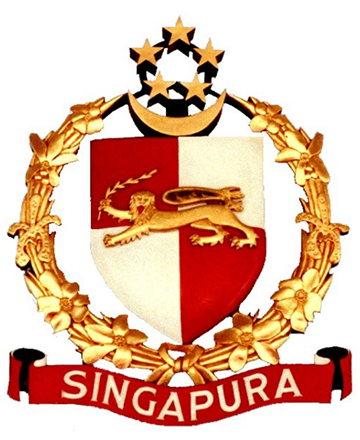
Designed in 1960, the Presidential Crest features a red and white shield emblazoned with a lion carrying a stalk of laurel. This shield is crowned by a crescent moon and five stars, and encircled by an orchid wreath. Beneath the wreath flies a red banner with the word "Singapura".
The shield is symbolic of the President's role as the Defender of the Constitution of the Republic of Singapore. The lion carrying the laurel symbolises victory and glory to Singapore, the Lion City.
The other details on the Presidential Crest share similar elements with the national flag. The red and white colours represent universal brotherhood and equality, and everlasting purity and virtue respectively. The crescent moon represents a young country on the ascent. The five stars symbolise democracy, peace, progress, justice and equality.
The first Presidential Crest was made after Singapore gained independence. Carved out of wood, the original was hung at the Istana. Today, replicas of the original Presidential Crest hang over the front of the Istana Main Building and in the President’s office.
The Presidential Crest is used only by the President, on state crockery, state gifts and stationery related to the President.
Note: All uses of the Presidential symbols (which include the Presidential Crest, the Presidential Standard, the Presidential Chair and the President’s representation such as photos, images, video footages) must be approved by the President. Any external organisations intending to use any Presidential symbols must write to the President’s Office to seek approval.
Standard

Adopted in 1961, the Presidential Standard is a red flag with a white crescent moon and five stars emblazoned in the centre. The colour red symbolises universal brotherhood and equality. The crescent represents a young country on the ascent. The five stars represent democracy, peace, progress, justice and equality.
The Presidential Standard is flown from the highest point on the Istana main building from 8.00 am to 6.00 pm when the President is in the country.
Note: All uses of the Presidential symbols (which include the Presidential Crest, the Presidential Standard, the Presidential Chair and the President’s representation such as photos, images, video footages) must be approved by the President. Any external organisations intending to use any Presidential symbols must write to the President’s Office to seek approval.
Portrait and display guidelines
Portraits of President Tharman Shanmugaratnam and Ms Jane Ittogi
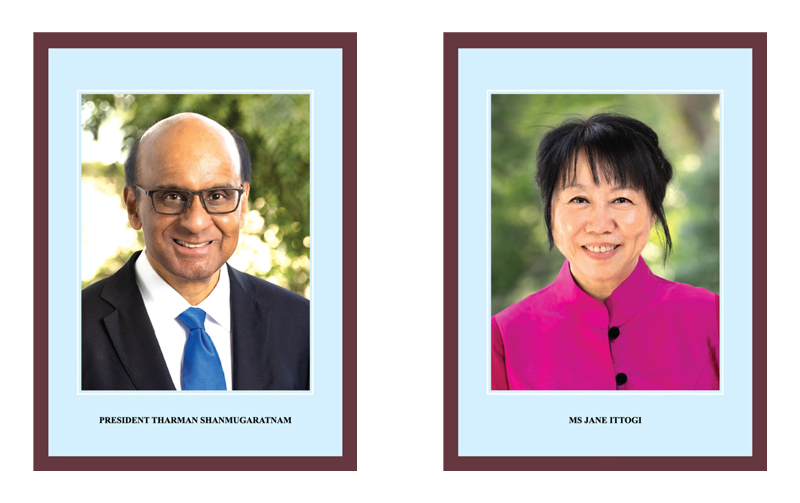
The portraits of President Tharman Shanmugaratnam and Ms Jane Ittogi are available for display in appropriate places. The unframed portraits are provided for free.
Please fill out the request form here. Once the request is approved, you will receive an email on the arrangements to collect the portraits.
Guidelines on display of the portraits
The portrait of the President must be positioned on the left and the portrait of Ms Jane Ittogi on the right. Both portraits must be framed and hung as a pair, at the same height.
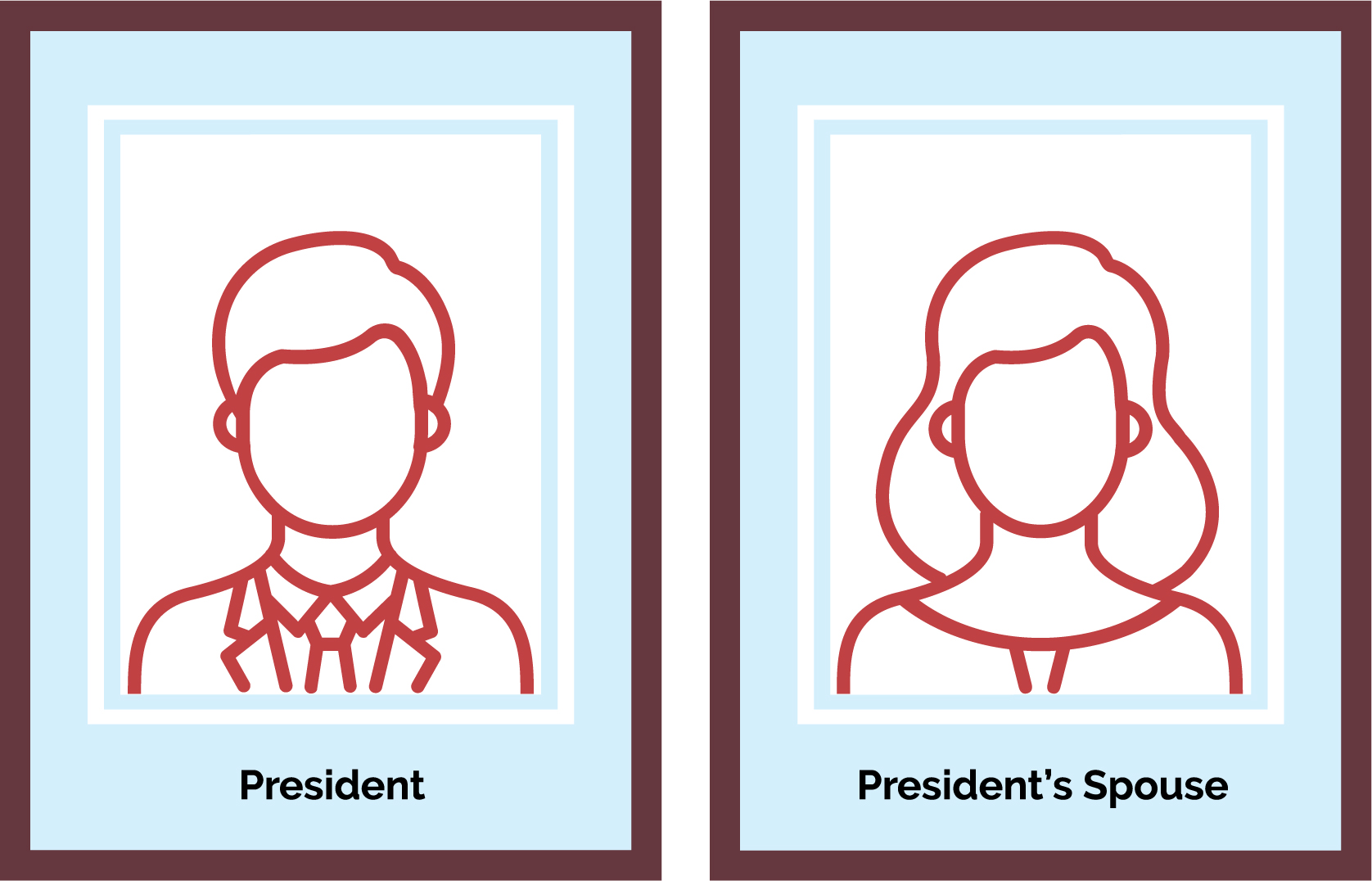
The measurement of the unframed portrait is 35.5cm by 49.3cm. A plain and simple frame should be used to frame the portraits.
Please refer to the measurements listed in the image below for the dimensions of the blue border that must be visible on the portrait when framed.
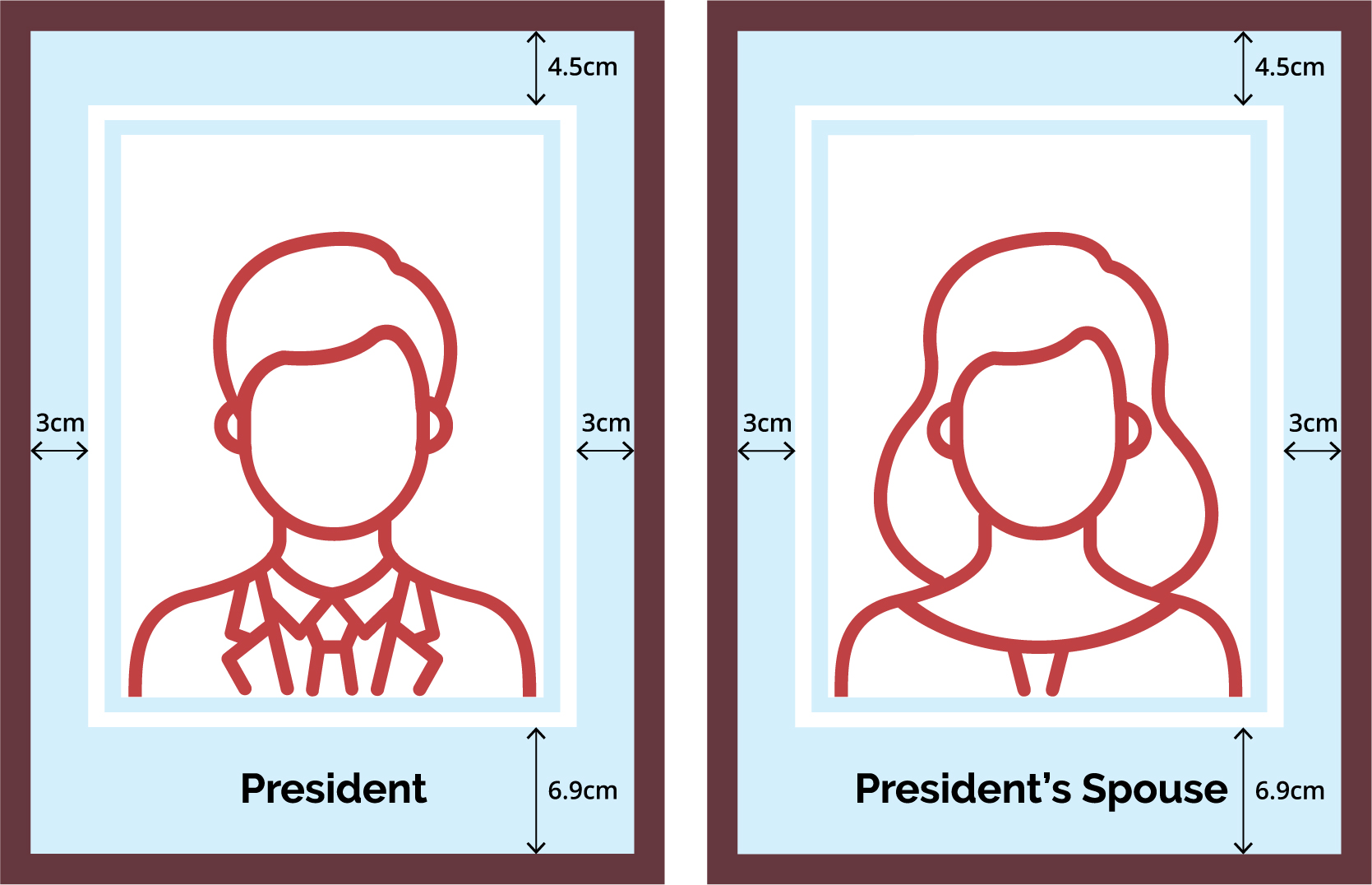
If the state crest is to be displayed with these portraits, it should be placed between the two portraits, with its top in line with the top of the portraits. No other pictures, photographs, emblems or notices should be placed above or immediately beside the portraits. Display of the state crest with the portraits is permitted only for government organs, ministries and Singapore embassies overseas. For enquiries on the use of the state crest, please visit the National Heritage Board website.
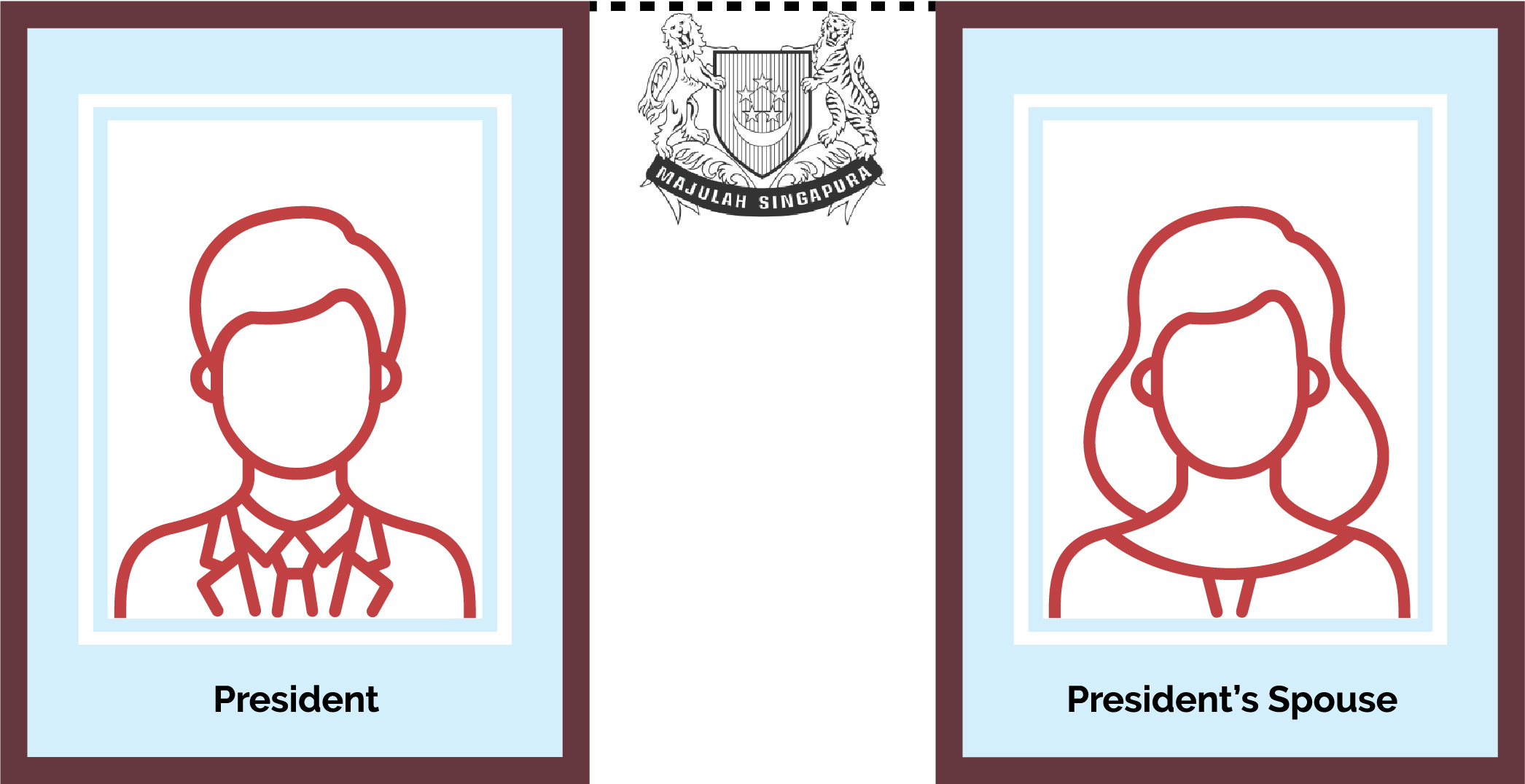
Care should be taken in the choice of location to ensure that the portraits are accorded decorum.
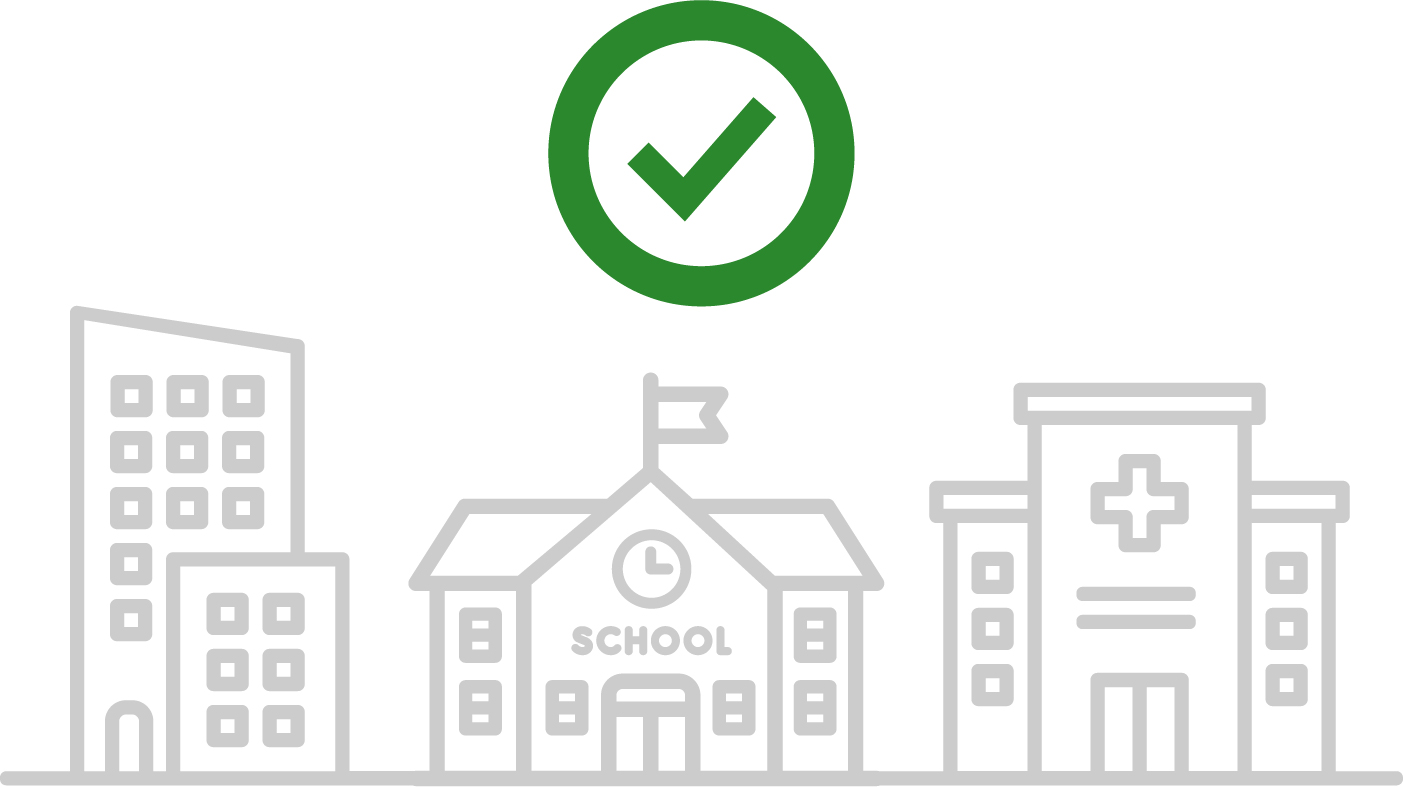
Appropriate places include public areas, for example:
main lobbies (except for lift lobbies)
reception counters
auditoriums
public waiting areas of passport and permit offices
polyclinics
hospitals
financial institutions
military establishments
hotels
embassies
country clubs
The portraits should not be displayed at places where games and entertainment take place or where food and drinks are served, for example:
karaoke lounges
games and jackpot rooms
amusement centres
arcades
canteens
bars
pubs
beer and eating establishments
